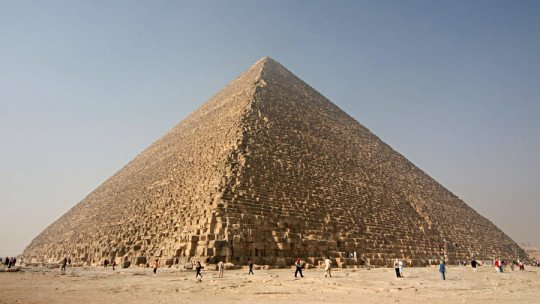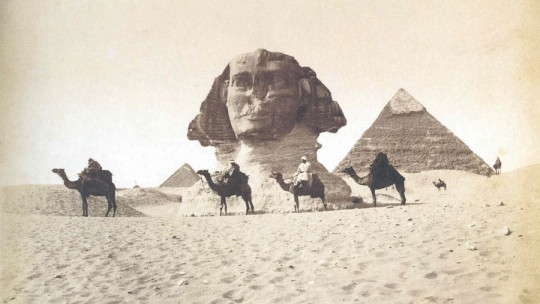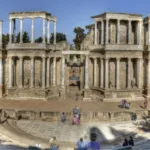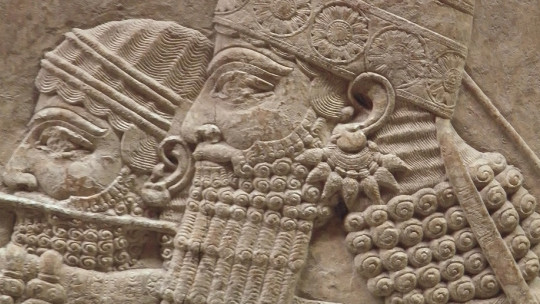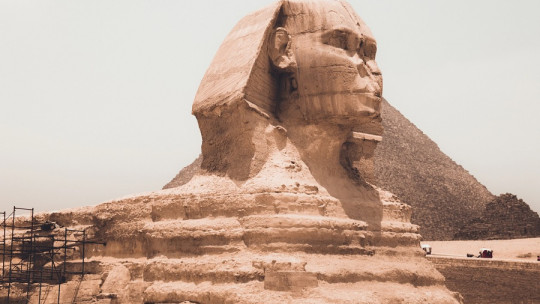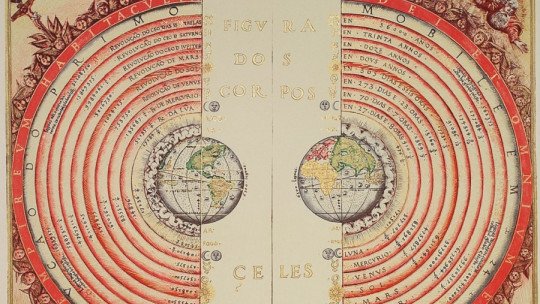When we plan a trip, we usually use guides, where they detail which places it is essential to visit. This, which a priori may seem like a product of our time, is much older than we believe. And the fact is that, in Antiquity, some authors such as Philo of Byzantium wrote down which buildings the numerous tourists, mostly Hellenes, who swarmed around the cities of the Mediterranean and the Middle East at that time, should visit.
From this kind of “guide” arose the classification of the “wonders” of the ancient world, although the 7 elements that compose it were not established until modern times. Let’s see below what these 7 wonders of Antiquity were and what characteristics did they have?
The 7 wonders of the ancient world: a tourist guide to Antiquity
Philo of Byzantium lived in Alexandria in the 3rd century BC, and worked in its famous library. According to tradition, the first compilation of the theamata of its time (erroneously translated as “wonders”, when in reality it would be something like “things worth seeing”), a must-see for all travelers who wanted to get to know the lands where they arrived in depth. This is the book The Seven Wonders, whose attribution to Philo is doubtful but which, be that as it may, was extremely successful and reached medieval Europe with the title De septem mundi miraculis.
However, the wonders described by Philo were not a standard list. On the contrary; Other later authors modified some of its elements, and even in Philo’s own work there are some that do not exist in the “canonical” list that has come down to us. For example, instead of the lighthouse of Alexandria, the scholar includes the walls of Babylon as one of the great wonders of his time.
For his part, Bede the Venerable, already in the 7th century, introduced other elements, such as the Capitol of Rome or the theater of Heracleia. Be that as it may, the 7 wonders that we will talk about in today’s chapter are those that were fixed more or less in the 17th century, which we detail below.
1. The Great Pyramid of Giza
Its main peculiarity is that It is the only one of the 7 “canonical” wonders that still stands The rest were destroyed many centuries ago, some at an indeterminate time. In fact, it is estimated that the 7 wonders together only lived together for just six decades.

The Great Pyramid of Giza is also the oldest wonder. It was built during the 3rd millennium BC, during the reign of Pharaoh Cheops (Khufu in the original Egyptian), and its height reaches almost 150 meters high. But not only its cyclopean volume must have impressed ancient travelers; Let us remember that, in Hellenic times, the pyramid was still covered with limestone, whose immaculate white color shone under the intense rays of the Egyptian sun. A spectacle, without a doubt, wonderful to behold.
2. The Hanging Gardens of Babylon
Historians doubt the existence of this “wonder”, since all the testimonies we have are indirect (nothing similar is ever mentioned in the Babylonian records) and, furthermore, it is difficult to imagine how the people of Babylon, in a world surrounded by desert, could maintain these lush evergreen gardens If so, they must have enjoyed absolutely extraordinary engineering to bring the necessary water from the Euphrates.

Legend has it that King Nebuchadnezzar II had the gardens built so that his wife would not miss her lush land of origin. It seems that this wonder of the world consisted of numerous large terraces covered with plants and flowers, whose height exceeded 20 meters. An authentic waterfall of vegetables that, without a doubt (and if it really existed) would seem like Paradise on earth.
3. Mausoleum at Halicarnassus
This magnificent tomb, which contained the remains of the Persian satrap Mausolus (hence the name of this type of construction) and those of his wife, was described by the Greek historian and traveler Herodotus. It seems that It was located in Halicarnassus, present-day Turkey, and reached a height of 41 meters

The existence of this wonder seems more than proven. Intense earthquakes that devastated the area destroyed the building, and later, in the 15th century, what remained of it was definitively looted by the Knights of Malta. As usually happens, the remains of the mausoleum served as material for the construction of the castle, in the midst of a defense operation against the Turks.
4. The Colossus of Rhodes
We know that The famous colossus was actually a representation of Helios, the god of the sun Little or nothing is known about its location on the island, nor have any representations of the sculpture been preserved that could give us an idea of what it looked like. We do preserve some descriptions and details of their measurements, which were, indeed, colossal: more than 30 meters high. The sculpture welcomed the ships arriving in Rhodes, so we can imagine the impression of the visitors, especially if we consider that the statue’s fingers, according to Pliny the Elder, were larger than most sculptures.
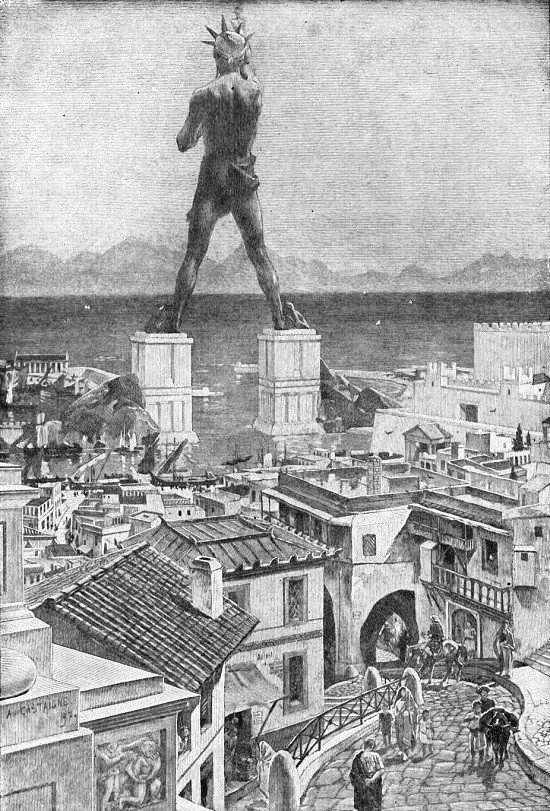
The “wonder” remained standing for a few years, since around 226 BC it collapsed, without its decline tarnishing its fame: it is said that, during the eight centuries that it remained lying on the ground, visitors continued to flock to see such a prodigy. Of art. The end came to her, according to some sources, when she was mutilated to sell her valuable bronze.
5. Statue of Zeus in Olympia
Located within the temple of the god in Olympia, it had been made by Phidias, the famous author of the also magnificent statue of Athena that was in the Parthenon. According to the descriptions we have, that of Zeus, in a similar way to that of the goddess, It was covered in ivory and beaten gold and wore countless jewels in its crown The god was seated on a spectacular throne, also made of gold and ivory, and held the goddess Nike, the Victory, in his hand.
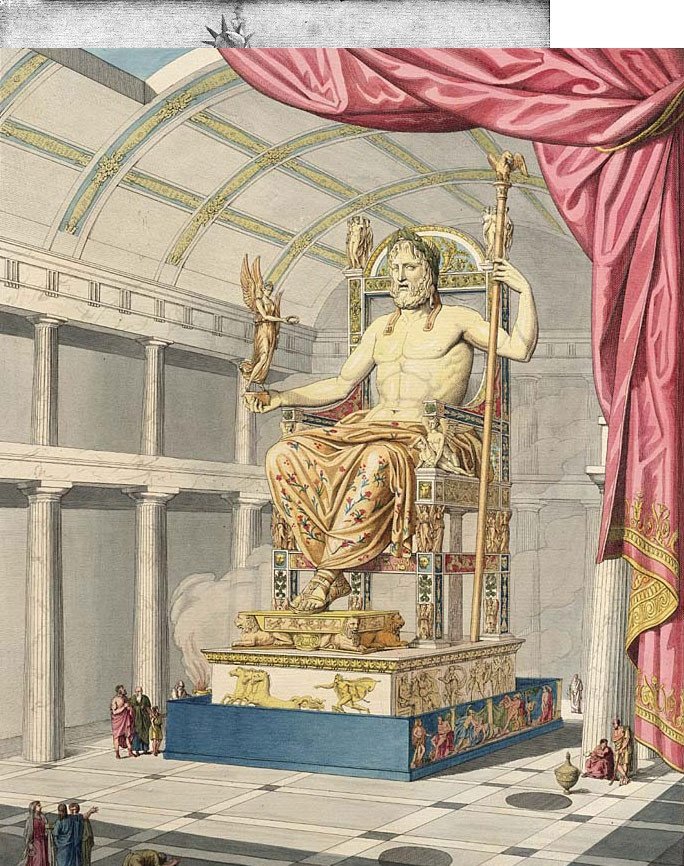
The spectacular statue was lost sometime in the 5th century AD, although historians do not agree whether the cause of its destruction was the fire that occurred in Olympia or the one that devastated the city of Byzantium. In the latter case, and for unknown reasons, the statue had to be transported to the latter city.
6. Temple of Artemisia in Ephesus
Raised and destroyed on several occasions, the history of this wonder is worthy of mention. The construction of the temple, dedicated to the goddess Artemisia, took more than a century, and its survival lasted just long enough for astonished travelers to record its dimensions. It burned, according to sources, the same night that Alexander the Great was born
Some time after the tragic destruction, the temple was re-erected, only to be destroyed again during the invasion of the Goths. For the third time the building was rebuilt, only to be definitively demolished during the Christian era. Of its magnificence (almost 130 meters long and almost 70 meters wide, supported by more than a hundred columns 18 meters high), only a few ruins remain, discovered in 1869.
7. The lighthouse of Alexandria
It was the third tallest structure of its time, and Sources say that its light could be seen more than 50 kilometers out to sea Built in the time of Ptolemaic Egypt (it was completed in 280 BC), it was the wonder of the ancient world that remained on earth the longest, not counting the pyramids.
In the 15th century, the lighthouse had suffered much damage due to intermittent earthquakes. At the end of the century, the Mamluk sultan Quaitbey (1416-1496) built a fort on the former site of the lighthouse. Of all the wonders described by ancient authors, only the spectacular pyramid of Giza remained standing, which, in fact, continues to fight, immune, against time.

